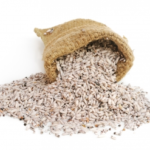Following a low glycemic diet and avoiding high glycemic foods is one way to try and control blood sugar with diet.
People trying to lose weight may benefit from a diet of low glycemic foods because keeping blood sugar steady is one way to avoid excessive hunger. In common terms, this is sometimes referred to as a “sugar high.” When a food with a high glycemic index is consumed, the dieter may feel a rush of energy due to a rise in blood sugar. That rapid rise will also end and leave the dieter feeling hungry and tired.
With a low gylcemic diet dieters can try to avoid foods with a high glycemic index, thereby avoiding the blood sugar roller coaster.
Sticking to a low glycemic diet and avoiding high glycemic foods is a good eating plan for anyone with diabetes. Lower GI foods have been shown to help control type 2 diabetes and improve weight loss,” according to the Harvard School of Public Health.
The current diet fads and trends are based on the idea that dieters can control their glycemic response by avoiding high glycemic foods, and opting for low glycemic foods instead.
There is also contrary evidence that the “glycemic index has little effect on weight or health” according to the Harvard School of Public Health.
They do recommend that any diet containing certain low-glycemic index foods including beans fruits, vegetables and whole grains, is good for your health. (Harvard School of Public Health)
Always check with your doctor before beginning any diet.
High Glycemic Foods and Disease
Consuming mostly foods with a high glycemic index may increase risk for heart disease and diabetes, according to the Harvard School of Public Health. The Harvard School of Public Health further states that “there is preliminary work linking high-glycemic diets to age-related macular degeneration, ovulatory infertility, and colorectal cancer.”
When to Eat High Glycemic Foods
Not all glycemic foods are off-limits. There are times when it is appropriate and necessary to consume high glycemic foods, if you are not diabetic.
For example, athletes may want to consume high glycemic foods after their work outs to speed tissue repair and muscle recovery (Nutrition Data). There are times when athletes or anyone who works out regularly may want and need to consume high glycemic foods.
Understanding Low Glycemic Index vs. High Glycemic Index
According to Nutrition Data, a food with a Glycemic Index of 55 or below is falls into the category of low glycemic index. Foods which have a Glycemic Index of 70 or above are in the High Glycemic category.
Low Glycemic Foods
black beans
bran cereals
brown rice
chick peas
grapefruit
instant rice
lentils
lowfat yogurt
high-fiber fruits
high-fiber vegetables
kidney beans
milk – low-fat, whole, skim, chocolate
multi-grain bread
pearl barley
pinto beans
zucchini
High Glycemic Foods
candy bars
corn flakes
couscous
danish
dates
parsnips
potatoes: baked, french fries, chips
pretzels
refined breakfast cereal
rice cakes
short grain rice
watermelon
waffles
white bread
white-flour pasta
white Basmati rice
Popular diets which adhere to a low glycemic food menu include the South Beach Diet and the Mediterranean Diet.
Sources
“Carbohydrates: Good Carbs Guide the Way,” by Harvard School of Public Health, http://www.hsph.harvard.edu/nutritionsource/carbohydrates.html
Glycemic Index, http://www.glycemicindex.com
Nutrition Data



